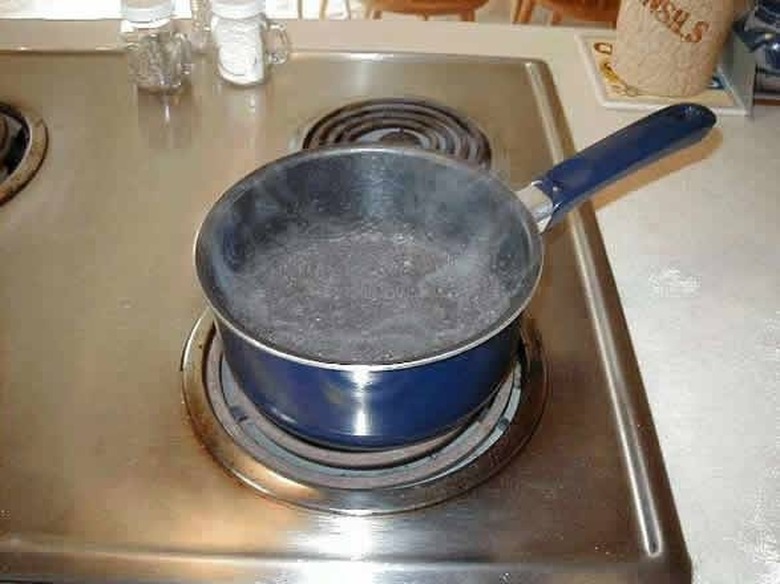What Is Latent Heat Transfer?
The transitions between a material's solid, liquid and gaseous phases involve large amounts of energy. The energy required for the transition is known as latent heat transfer. Recently, alternative energy researchers have been looking at ways that this latent heat transfer can be used to store energy until needed. For example, one Department of Energy (DOE) study is considering whether concentrated solar power could utilize molten salt for thermal energy storage.
Sensible Heat Transfer
Sensible Heat Transfer
When two substances with different temperatures are brought into contact with each other, the substance with the higher temperature transfers heat to the substance with the lower temperature in a process called "sensible heat transfer." For example, when the sun sets, the air gets colder and becomes cooler than the ground. The ground transfers some of its heat to the air causing the ground to get colder and the air to get warmer.
Latent Heat Transfer
Latent Heat Transfer
At the point where one of the substances is ready to change state or phases (solid to liquid, liquid to gas, etc), heat is transferred from one substance without a corresponding temperature shift in the other substance. This process of giving off or absorbing heat without changing temperature is known as "latent heat transfer."
Types
Types
The amount of heat that must be added to a liquid to change it to a gas (i.e., water into steam) is called the "latent heat of vaporization," while the amount of heat that must be added to a solid to change it to a liquid (ice to water) is the "latent heat of fusion." The amount of energy that must be added to change the phase of one gram of a substance is much greater than the energy required to raise the temperature of one gram of the same substance one degree Celsius. The energy needed to raise a gram one degree is called the "specific heat" of the substance. Water has a specific heat of 1 calorie/gram °C and a heat of fusion of 79.7 cal / gram.
Considerations
Considerations
Energy is not lost during latent heat transfer. For example, ice melting causes latent heat to be absorbed. When water freezes, the latent heat is released. Similarly, when water evaporates, it absorbs energy, but when water condenses, the energy is released.
Benefits
Benefits
Many alternative energy sources are limited because they cannot provide constant energy production. Solar generators only produce when the sun is shining, and wind turbines obviously only work when the wind is blowing. This has resulted in increased research into low-cost and effective ways to store the energy until needed (for example, to store excess solar electricity produced on a sunny day to be used during the night).
Latent heat thermal energy storage (LHTES) systems could store and discharge large amounts of energy as substances melt and solidify. Additional research is needed to decide which materials have the right characteristics that could allow everything from cars to factories to effectively utilize latent heat transfer.
References
Cite This Article
MLA
Rowe, Chris. "What Is Latent Heat Transfer?" sciencing.com, https://www.sciencing.com/latent-heat-transfer-5157531/. 24 April 2017.
APA
Rowe, Chris. (2017, April 24). What Is Latent Heat Transfer?. sciencing.com. Retrieved from https://www.sciencing.com/latent-heat-transfer-5157531/
Chicago
Rowe, Chris. What Is Latent Heat Transfer? last modified March 24, 2022. https://www.sciencing.com/latent-heat-transfer-5157531/
